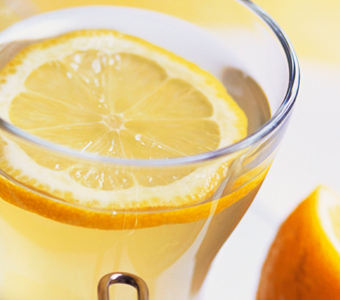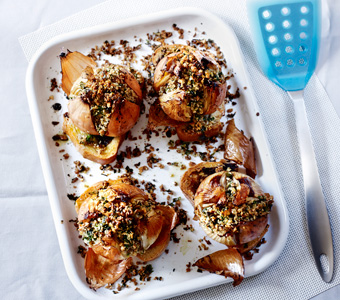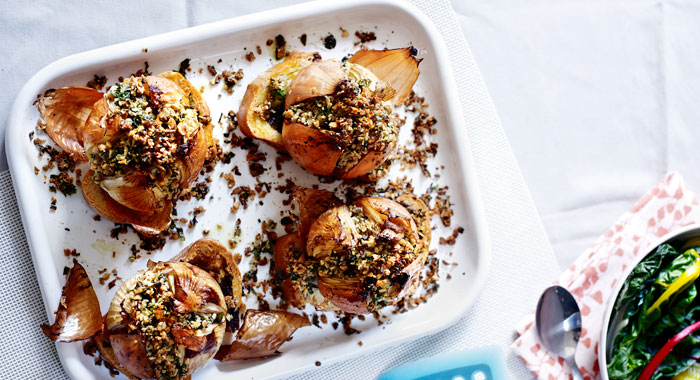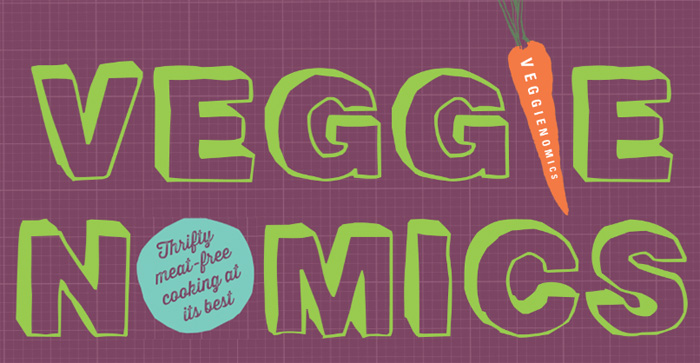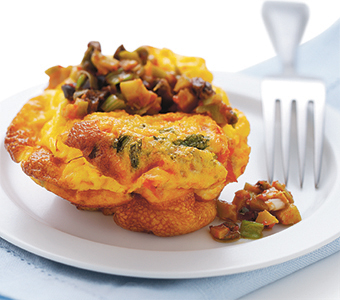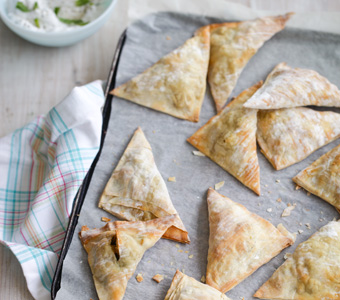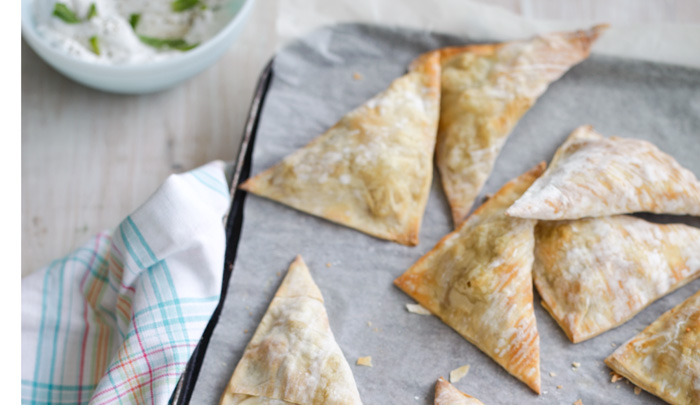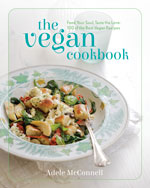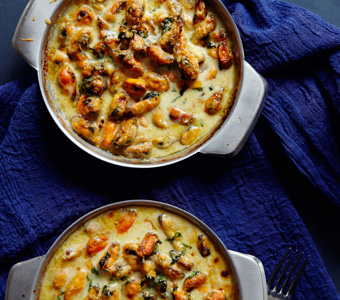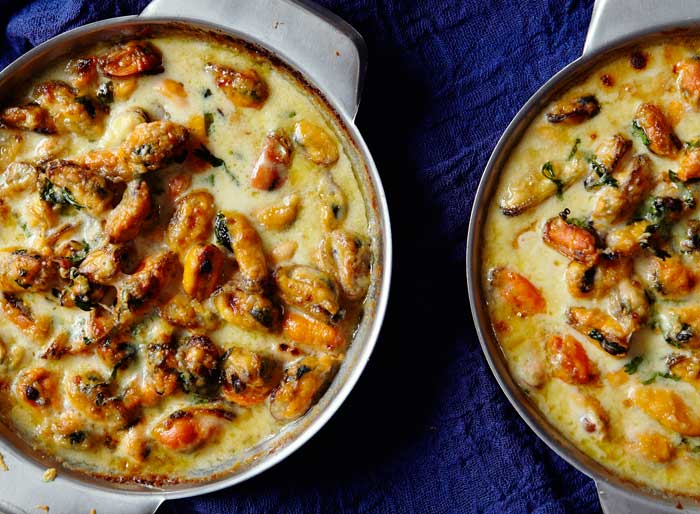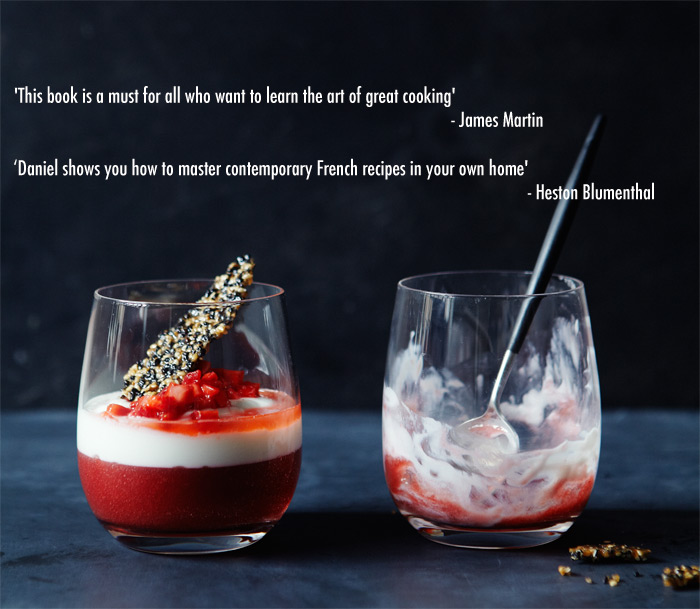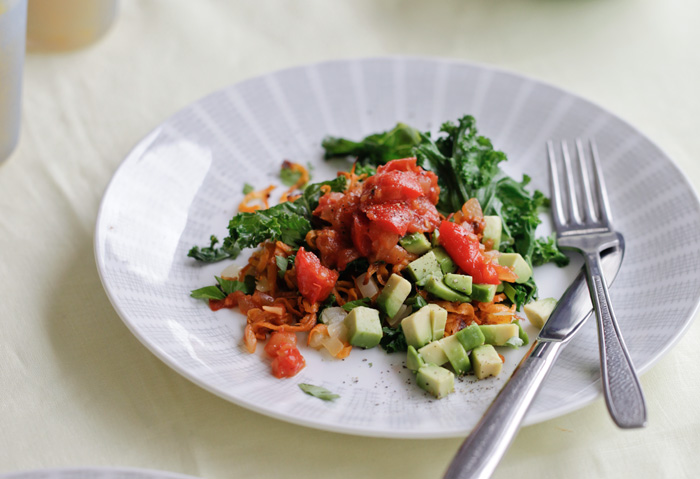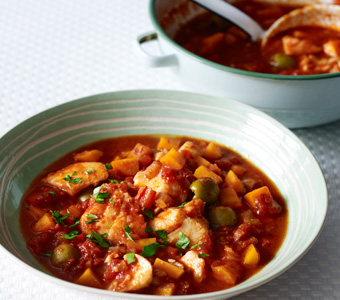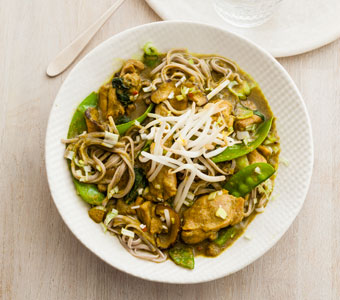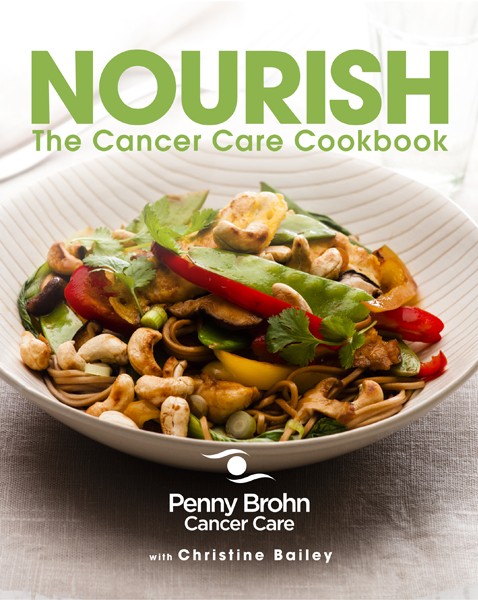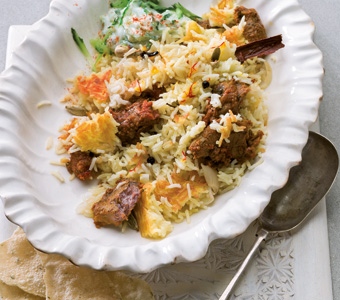
From Zita West’s Eat Yourself Pregnant, with recipes by Christine Bailey.
It’s National Infertility Awareness Week, so who better to go to for advice than the UK’s most-trusted fertility expert Zita West. Zita knows that diet and fertility are inextricably linked, and so preparing your body for a successful conception really can come down to making the right food choices. This extract from her brilliant new book, Eat Yourself Pregnant, sets out some basic rules to follow to boost your chances of a successful conception through nutrition – and there is also a recipe for delicious Indonesian Chicken with Buckwheat Noodles to set you on the path to a baby-ready body.
The latest national diet and nutrition surveys in the UK and USA reveal a worrying trend. They show that we have insufficient intake of key nutrients such as vitamin D, folic acid, iron, magnesium and omega-3 fats, and that we increasingly rely upon processed convenience foods rather than on fresh, whole foods. Furthermore, even if we do eat a healthy diet, modern methods of production and storage mean that the nutrient content of our food is often lower than the levels of 50 years ago. To make matters worse, stress and environmental toxins further deplete the nutrients in our bodies. For optimal fertility, we need to redress the balance.
The power of protein
It’s not only your hormones and the neurotransmitters in your brain that need protein – eggs and sperm need it, too. High-quality protein, such as from lean meat and poultry, as well as fish, eggs and soya beans, contains all eight essential amino acids. These are biological catalysts that enable protein to break down and become what the body needs – be that muscle or other tissue, egg, sperm, neurotransmitter or hormone. Your body can’t manufacture these amino acids for itself (which is why they are essential), so they must come from your diet. Include one portion (about the size of your fist) of protein in every meal. If you’re vegetarian or vegan, you’ll need a full range of plant proteins to ensure that you get all the essential amino acids.
Fat facts
Women tend to need more fat than men for the healthy production of hormones. Healthy fats, such as those found in oily fish and certain seeds, stimulate the action of beneficial prostaglandins within the body. These are fat cells that play a critical role in menstruation, conception, pregnancy and labour. Unhealthy fats, such as saturated fats and trans fats, are quite simply villains who hamper fertility!
Essential fatty acids (EFAs)
Healthy fats that your body can’t produce for itself, EFAs must come from your diet. There are several kinds, but the most important for fertility and conception are omega-3 fats. Not only are these crucial for hormone production, they also help to modulate the immune system, reduce inflammation and boost mood. Omega-3 fats help to balance compounds in the body known as eicosanoids, which may be linked to increased risk of miscarriage. Studies of pregnant women who consume large amounts of long-chain omega-3 fatty acids, such as EPA (eicosapentaenoic acid) and DHA (docosahexaenoic acid), both of which are found in fish oil, tend to carry their babies for longer and have a correspondingly lower rate of premature birth.
Monounsaturated fats
This healthy type of fat can have a beneficial effect on insulin levels, helping to stabilize blood sugar, which has positive effects for your fertility. Monounsaturated fats remain liquid at room temperature, so are found in healthy oils, such as olive oil and sesame oil, and in nuts and seeds.
Saturated fats
Typically found in animal and dairy products, saturated fats, when eaten to excess, can interfere with your cell membranes (including those involved in reproduction). Furthermore, they may directly affect a man’s fertility by reducing the quality and quantity of his sperm. Saturated fats that contain medium-chain triglycerides (MCTs) – such as coconut oil – are more stable than other types of saturated fat, making them comparatively more healthy. These are more readily broken down by the liver and your body can use them for energy production.
Trans fats
Found in processed or fried foods and some margarines, trans fats (also known as damaged, hydrogenated or partially hydrogenated fats) prevent your body from making good use of essential fats and are generally harmful for all aspects of health, including fertility. All processed oils contain trans fats and they regularly appear in foods marketed as low fat.
How much and what kind?
Fats should comprise around 30 per cent of your diet, but no more than 10 per cent should come from saturated fats, and you should avoid trans fats altogether. The fats in your fertility diet should come from foods rich in EFAs and monounsaturated fats. This works out at a maximum intake of approximately 70g (2½oz) of fat per day for women and 95g (3¼oz) per day for men. As a guide to what this means in practice, one avocado contains almost 30g (1oz) of fat, a tablespoon of olive oil contains 14g (½oz) fat.
Monounsaturated fats include olive oil, rapeseed oil and rice bran oil, as well as the natural oils in avocados, most nuts and seeds, and organic, free-range poultry.
Omega-3-rich foods include oily fish (such as mackerel, salmon and sardines), rapeseed oil, linseeds (flaxseeds), chia, hemp and pumpkin seeds, and walnuts. Another type of essential fat, omega-6, occurs in raw seeds, especially chia, hemp, pumpkin, sesame and sunflower seeds, and their oils.
Carbohydrates
Your body needs carbohydrate for energy, but the quality of those carbs is critical. Good carbs are known as complex. These are slowly broken down into glucose (which the body uses as fuel), and are steadily released into the blood stream. You may hear them referred to as low-glycaemic-load (GL) carbohydrates. Because low-GL carbs are more nutritionally dense than other kinds, they help to keep your blood-sugar levels stable. Beans, pulses, vegetables, whole grains and some fruits, such as berries and citrus fruits, are all good sources. And if you combine good protein, good fats and good carbohydrates at each meal, you’ll be doing the best you can to balance your blood sugar. Eliminate refined sugars, sodas, processed fruit juices and artificial sweeteners – as these are all sources of bad carbohydrate that release sugar into the blood stream too quickly, causing insulin imbalance.
Antioxidants
During metabolism, your body produces free radicals – unstable molecules that race through you trying to make themselves more stable. In doing this, they damage otherwise healthy cells. Toxins, pollution and a poor lifestyle (including smoking and getting sunburnt) can also cause free-radical damage (also known as oxidative stress) within the body. Male infertility, endometriosis and damage to egg cells and to sperm have all been linked with the action of free radicals. Wonderfully, there are brave warriors against free-radical damage – antioxidants.
There are two types of antioxidant – endogenous antioxidants that are made by the body, and exogenous that you obtain from your diet and supplements. Fruit and vegetables are packed with powerful phytonutrients (plant nutrients) that are potent antioxidants. Think colour – the darker or brighter the colour of the fruit or vegetable, the greater its antioxidant power. Nuts and seeds, herbs, spices (particularly turmeric) and green tea are also good sources.
Reality check
So, your baby-ready diet needs to be perfectly balanced with good protein, good fats, good carbs and an abundance of antioxidants. No more will you look at chocolate bars and fizzy drinks; crisps and cakes are for the old you… Well, yes in a perfect world. But I don’t want you to be perfect; I want you to be realistic. For many women (in particular), food, mood and hormones are interlinked. You might crave different foods at different times in your cycle. It’s possible to
tailor your diet to take into account the ebb and flow of your cycle, so that you can eat more healthily when your hormones allow, and leave yourself a little bit of leeway for the times when nothing but chocolate will do.
Overall, I recommended an 80:20 approach – try to stick to my recommendations 80 per cent of the time and don’t worry if you occasionally slip up (that is, you have a 20-per cent leeway).
The need for detox
To give you a clean-slate position from which to start preparing for pregnancy, before you embark upon applying the principles of the baby-ready diet, it’s important you try a detox (intended for both of you) that will help get your body back to basics. The body’s natural detoxing organ is the liver, and the aim of a detox programme is to reduce the burden on it, which will help balance your oestrogen levels and help you to kick any bad habits.
Having prepared with your detox, there are certain general principles that I want to encourage you to adopt in your diet over the coming months. These are to get your gut healthy and your blood sugar in balance, and to create a less acidic environment in your body, which is not only better for you generally, but a better environment for sperm.
Loving your gut – fertility and digestion
As you’ve seen, your hormones are made by the nutrients in your system. This means that your gut needs to be in super condition to get the best out of your food. Here are my top tips for gut health.
1. Eat the right foods
The Chinese believe that foods have five flavours – sweet, sour, salty, bitter and fragrant. All are thought to create different energies in the body, which affect the flow of qi (the body’s life force). In order to be healthy, the Chinese believe we need a balance of all these flavours in our diet. Whether or not you hold with the Chinese view, the notion of balance is one that is crucially important for good gut health. Try to implement the 80:20 approach to eating and make sure you get a range of nutrients.
2. Eat at the right times
Your digestion is raring to go at breakfast. This is why having a good breakfast that includes slow-releasing carbohydrates is essential at the start of the day. Breakfast is the most important time to set yourself up to avoid snacking. I’m not a great one for snacks – I think that if you eat good carbs, you shouldn’t feel the need to snack between mealtimes. Take your main meal at lunchtime twice or three times a week if you can. This avoids a heavy meal in the evening, which may interfere with your digestion. (Focus more on protein and vegetables – and less on carbs – in your evening meals, as these are less taxing for your gut. Carbs, raw foods and alcohol after 7pm can result in a combination of sugars that ferment in your gut, causing gas and acidity that weaken your gut lining.) Also, a late supper means that you’re taking in a lot of fuel, but not doing anything with it, so it is stored as fat. Finally, but importantly, if your body is busy trying to digest food at night, you won’t be able to sleep properly.
3. Eat the right amount
Increasingly, the Western population in particular is overeating. As a guide, don’t eat until you can’t take any more – stop before you get full. Use a smaller plate so that what’s on it looks lavish rather than mean; and savour every mouthful to fully appreciate what you’re eating.
4. Chew, chew, chew
As a child weren’t you always told to chew properly? Chewing is the first stage of the digestion process, increasing the salivary enzymes that help to break down your food before it gets to your stomach, making it easier to digest. By chewing your food you also feel fuller for longer and so are less likely to snack or overeat.
No more rollercoaster – blood-sugar balance
In order to make sure your blood-sugar levels remain stable, follow these simple principles:
• �Don’t skip meals.
• �Combine protein and carbohydrate at every meal. This delays the digestive process and allows a more gradual release of glucose into your blood stream. You will feel fuller for longer and are less likely to have an energy dip that makes you want to snack on something sweet. Peas and beans are a ready-made mixture of protein and carbohydrate, so stock up on them.
• �Avoid refined carbohydrates and processed foods – including sugary cakes, biscuits and sweets, juice drinks or squashes, white bread and white rice and pasta. These are bad carbohydrates that release sugar too quickly into your blood stream and put you back on that rollercoaster of energy highs and lows.
• �Eat slow-releasing low-GL carbohydrates – brown, dense and grainy foods that have all the vitamins, minerals and fibre still retained.
• �Add a little unsaturated fat to your meals – almonds, avocado, olives, peanuts, pine nuts and sunflower seeds, and cold-pressed organic olive oil are all good sources.
• �Always read the label. If sugar is one of the first ingredients listed (even if it’s as organic cane juice, honey, agave, maple syrup, molasses or fructose syrup), put the product back.
• �Snack between meals only if you are really hungry. If you must have something, make sure it’s the right kind of snack. Nuts and seeds; oat cakes with hummus, cottage cheese, guacamole or nut butter; or fresh fruit with a spoonful of live yogurt are all examples of good-for-you snacks.
Acid–alkaline balance
Sperm thrive in a slightly alkaline environment. This is why vaginal secretions during a woman’s fertile time are slightly alkaline. The pH of your blood is around 7.35–7.45, which is also slightly alkaline. Keeping your diet more alkaline is easier on your digestive system and will help your body maintain its natural acid–alkaline balance.
Although the body prefers to be slightly alkaline, acidity is a normal by-product of your metabolism. Acids are created when your body converts fats, proteins and carbohydrates into energy; then, they are excreted as waste. High-protein diets, high alcohol intake and eating processed foods, as well as stress and smoking, all make the body more acidic.
In order to maintain acid–alkaline balance, 80 per cent of your food intake should be alkaline – which means eating plenty of alkaline-rich vegetables and some fruit with each meal. Use the following lists as a guide to the acidic (or otherwise) nature of certain foods. Try not to become too fixated on them, though – just be aware. As long as your diet is varied and healthy, your body should sort out the rest.
Alkaline-forming foods (include these):
• �most fruits
• �fresh vegetables and sea vegetables
• apple cider vinegar
• coconut water
• �super-green powders, such as spirulina
• �oils, such as avocado, olive, coconut and flaxseed
Neutral foods (include these):
• most nuts and seeds
• beans and pulses
• rice, soya and hemp protein powders
• buckwheat, chia, quinoa, lentils and tofu
Acid-forming foods (keep to a minimum):
• animal protein (meat, fish and so on)
• �processed grains and cereals
• dairy products and eggs
• dried fruits, except dried figs
• sugar
• salt
• trans fats
• �alcohol, caffeine, energy drinks and sodas
Indonesian Chicken with Buckwheat Noodles
A hearty meal in a bowl, lightly spiced and packed with nutrient-rich vegetables. This dish contains a wealth of anti-inflammatory ingredients, including ginger, garlic and turmeric, together with immune-supporting shiitake mushrooms and coconut. Buckwheat noodles, also called soba, are a nutritious staple in Asian dishes and provide plenty of slow-release carbohydrates to keep you energized throughout the day.
Serves: 2
Preparation time: 15 minutes, plus at least 2 hours marinating
Cooking time: 20 minutes
1 lemongrass stalk, chopped
1 handful of coriander leaves
1 small onion, chopped
2 garlic cloves, crushed
2cm/¾in piece root ginger, peeled and grated
1 tbsp coconut sugar or honey
1 tbsp soy sauce
1 tbsp fish sauce
½ tsp turmeric
1 tsp garam masala
400ml/14fl oz/generous 1½ cups coconut milk
4 skinless boneless chicken thighs, cut into large chunks
125g/4½oz buckwheat noodles
1 tsp sesame oil
1 tbsp coconut oil
1 red chilli, deseeded and diced
1 pak choi, cut into strips
100g/3½oz mangetout
4 shiitake mushrooms, sliced
sea salt and ground black pepper
1 handful of bean sprouts, to serve
2 spring onions, chopped, to serve
1. Put the lemongrass, coriander, onion, garlic, ginger, coconut sugar, soy sauce, fish sauce, turmeric, garam masala and coconut milk in a blender or food processor and process until smooth. Pour over the chicken pieces and season lightly with salt and pepper. Cover and leave to marinate in the fridge for at least 2 hours, or overnight.
2. Cook the buckwheat noodles with the sesame oil according to the packet instructions, then drain and refresh under cold water.
3. Meanwhile, heat the coconut oil in a wok or large frying pan. Drain the chicken, reserving the marinade, and stir-fry for 2–3 minutes. Add the chilli, pak choi, mangetout and mushrooms and cook for a further 1 minute. Add the reserved marinade and simmer for 10–15 minutes until the chicken is cooked through. Toss in the noodles and warm through. Sprinkle over the bean sprouts and spring onions and serve.
Fertility and nutrition are inextricably linked, and equipping your body with the essential nutrients will increase your chances of conceiving naturally. Zita West, the UK’s most trusted fertility expert, explains how the chemistry of babymaking works and offers indispensible advice on how to prepare your body for a successful pregnancy. Also included are 65 inspiring and mouthwatering recipes that ensure that you are including all the vital nutrients for conception in your diet.
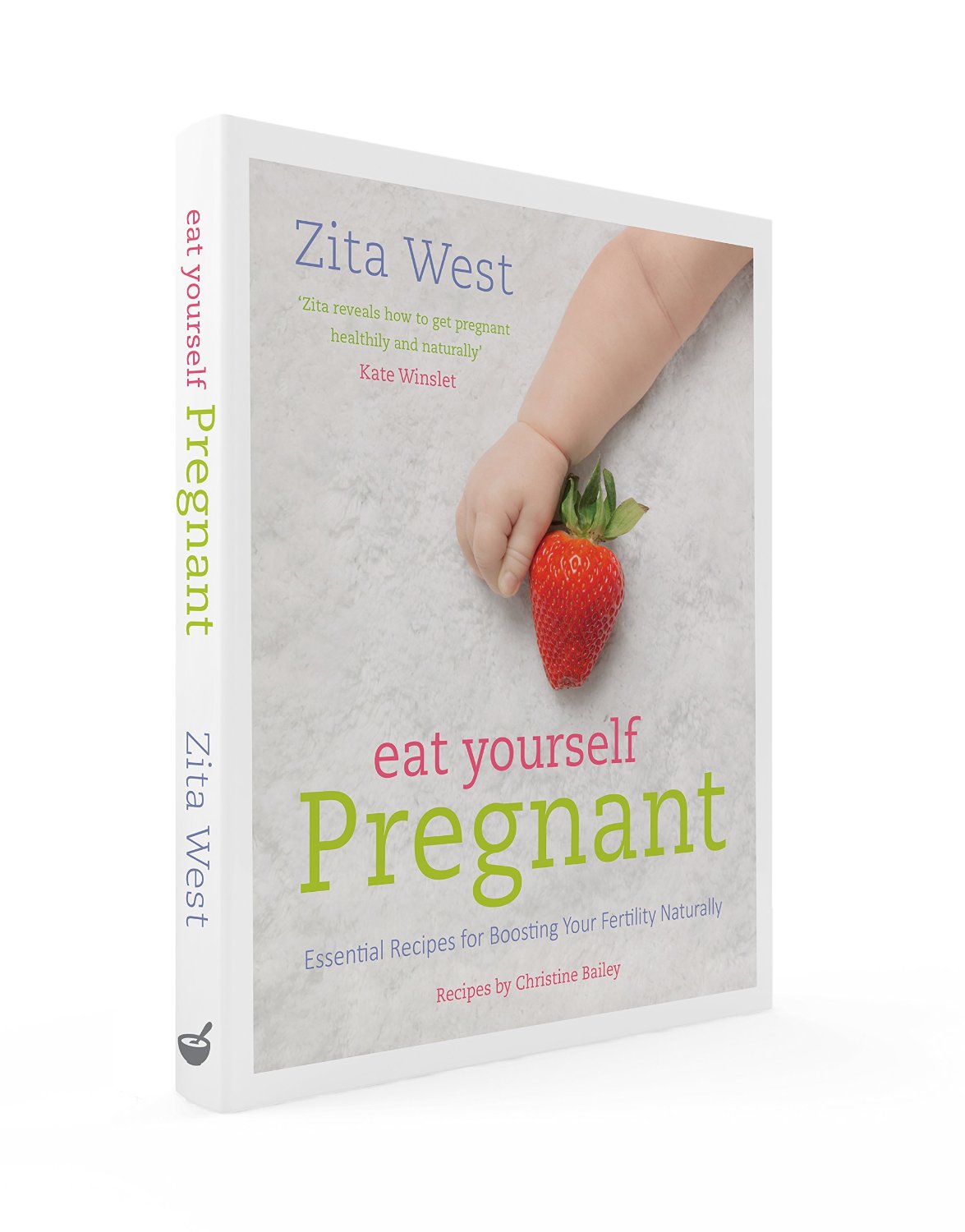
“Zita shows you how preparing for pregnancy and good nutrition is one of the most important investments you can make towards the health of your baby. I love to cook and the recipes in this book are great.” – Kate Winslet
Eat Yourself Pregnant by Zita West
160 pages • Illustrated
£14.99 | Buy the book now!
